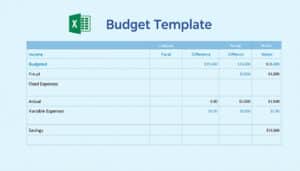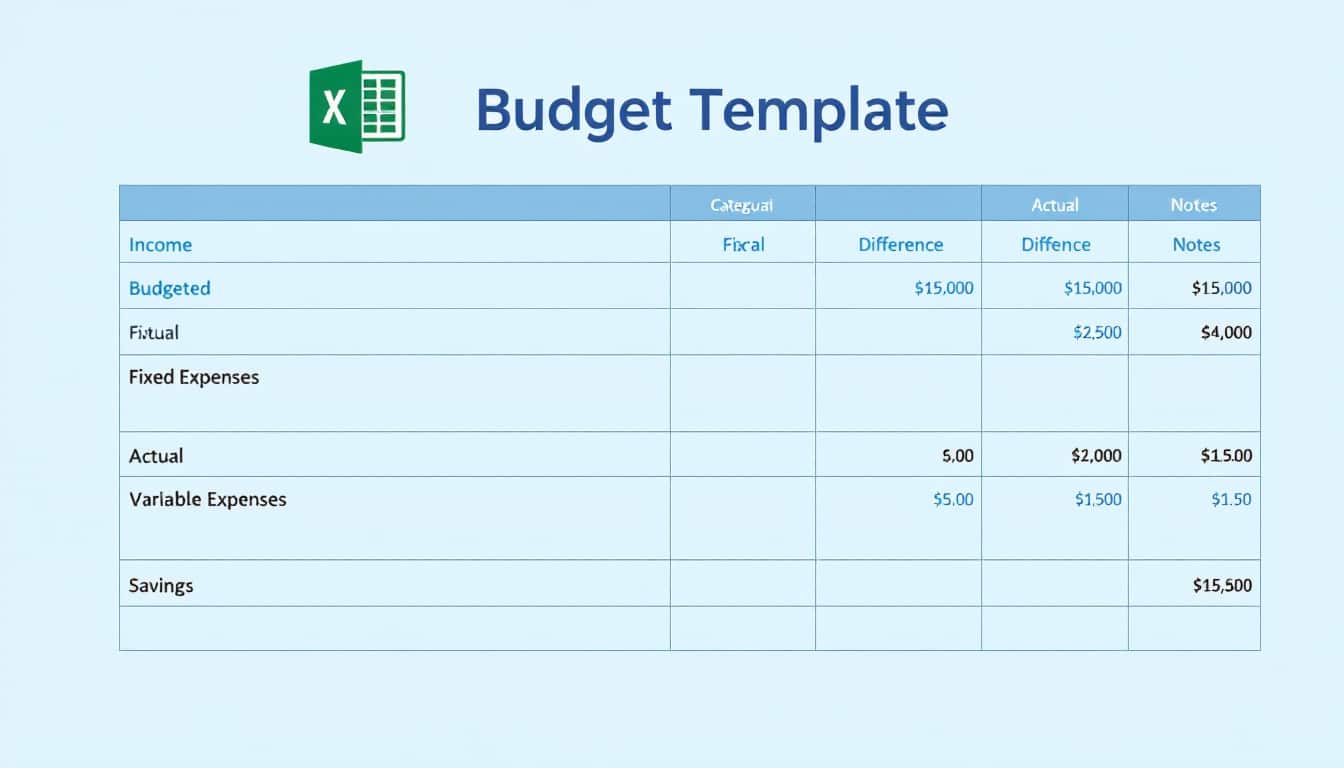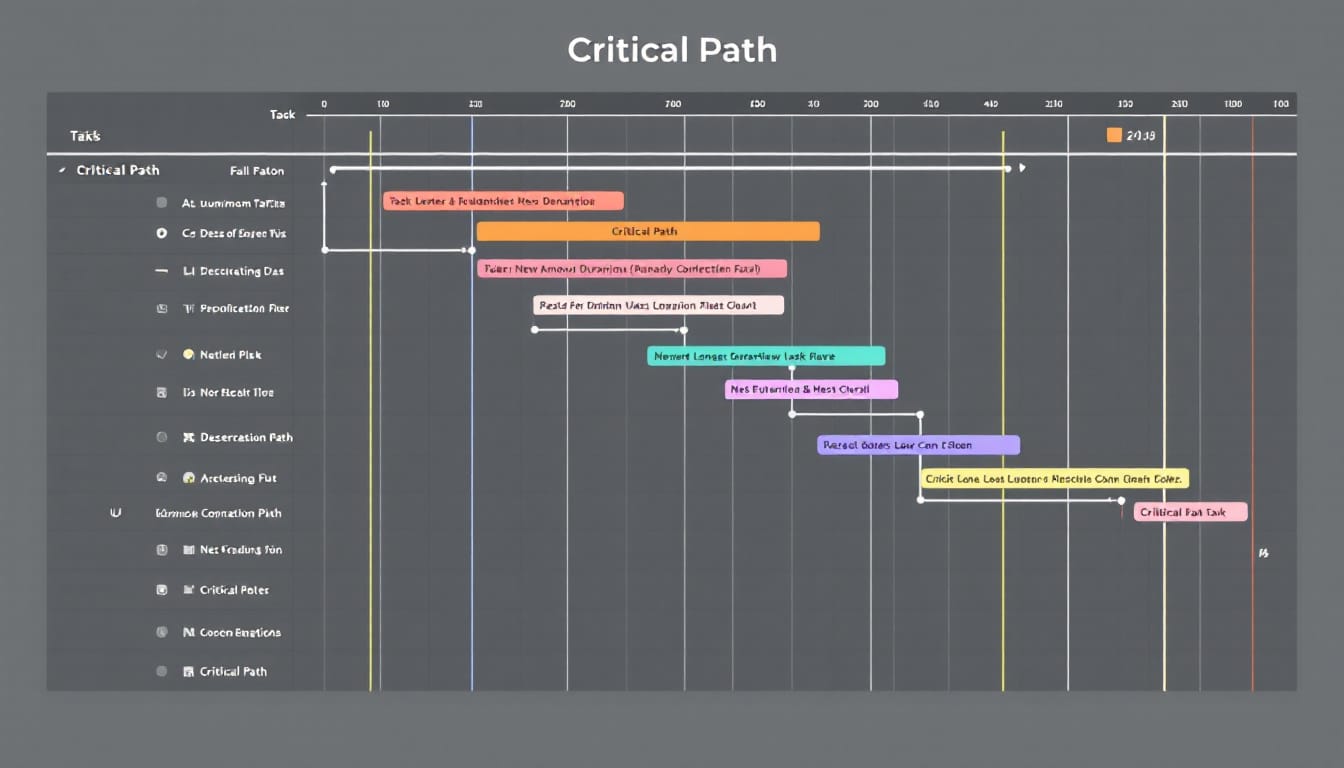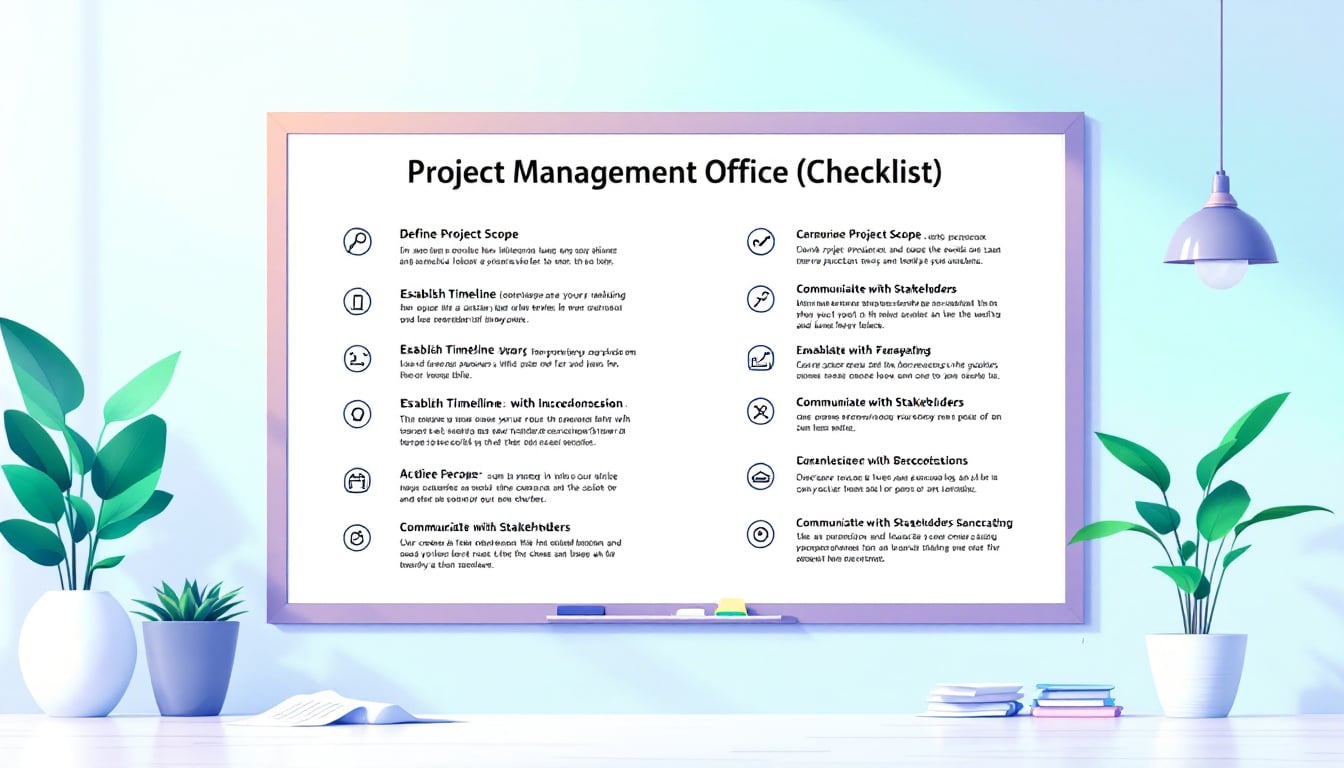Developing a stakeholder management plan is essential for the success of any project. In 2025, businesses are increasingly recognizing the importance of effective stakeholder management. A well-designed plan facilitates collaboration and ensures smooth communication between all parties involved.
🔥 Nous recommandons Ideamap
Ideamap est l’outil idéal pour un brainstorming ou un projet collaboratif. Grâce son interface facile et à ses fonctions IA, Ideamap booste votre créativité tout en favorisant une meilleure organisation de vos idées pour atteindre vos objectifs.
In this article, you will discover the key steps to create an effective stakeholder management plan. Each section explores a crucial aspect of stakeholder management, offering practical strategies and concrete examples to guide you. Whether you are a project manager or a team member, these tips will help you optimize your project management.

Understanding the Importance of Stakeholders
Stakeholders are individuals or groups with an interest in the success of a project. They can include department heads, investors, suppliers, board members, or team members. Their involvement in the approval process can either facilitate or complicate project execution, depending on the quality of management through a stakeholder management plan.
This is even more true in 2025, where project complexity is increasing and stakeholder diversity is multiplying. For instance, in a technology company, developers, end users, investors, and regulators must all be considered. Poor management can lead to delays, budget overruns, or even project failure.
According to a recent study, 75% of successful projects have a well-structured stakeholder management. This demonstrates the crucial importance of this process in the overall success of projects. By correctly identifying and engaging all stakeholders, project managers can anticipate problems, resolve conflicts quickly, and keep the project on track.
Moreover, effective stakeholder management strengthens trust and transparency within the team and with external partners. Stakeholders feel heard and valued, which increases their engagement and willingness to support the project. Thus, the planning and engagement of stakeholders are not merely administrative tasks, but essential strategic elements for project success.
Identifying Key Stakeholders
Identifying stakeholders is the first crucial step in developing a stakeholder management plan. This phase involves determining all individuals, groups, or organizations that can influence or be influenced by the project. A comprehensive identification ensures that no important actor is overlooked and helps tailor engagement strategies according to their different interests and levels of influence.
To identify stakeholders, several tools and techniques can be used. For example, a project kickoff meeting can be organized to present the project and discuss expectations, allowing key participants to be identified. The expertise of team members from various disciplines can also help in spotting less obvious stakeholders.
The stakeholder register is an indispensable tool in this phase. This document or database lists all identified stakeholders, including their interests, level of influence, and contact information. Additionally, group brainstorming techniques facilitate the identification of potential actors by exploring different perspectives of the project.
A concrete example can be seen in a residential construction project. Internal stakeholders include department heads such as the marketing manager, IT manager, and operations manager, while external stakeholders may include investors, regulators, material suppliers, and neighboring residents. By clearly identifying these actors from the outset, the project team can adapt its communication and engagement efforts to effectively meet their needs and expectations.
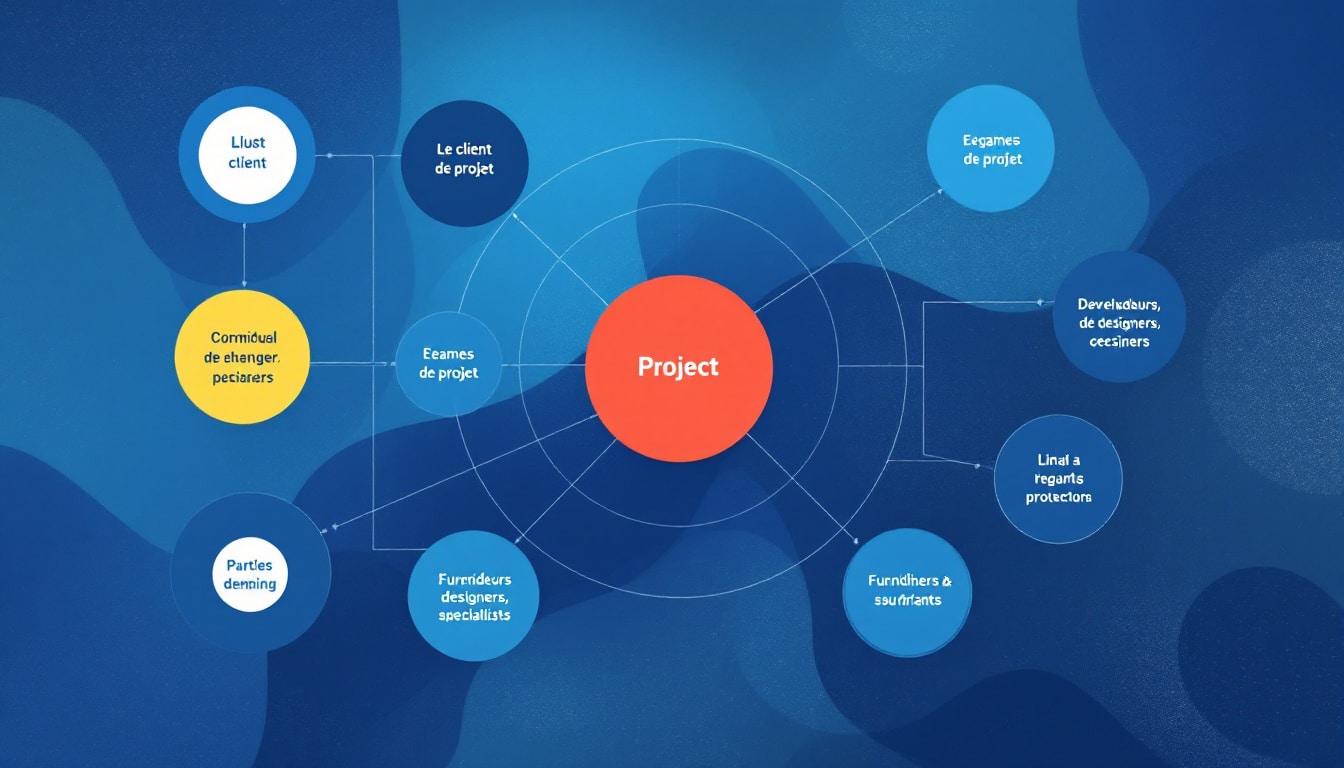
Analyzing and Categorizing Stakeholders
After identifying stakeholders, the next step is to analyze and categorize them based on their level of interest and influence on the project. This analysis allows for prioritizing stakeholders and developing suitable engagement strategies. An effective tool for this step is the influence and interest diagram, which helps visualize the position of each stakeholder and determine the most appropriate management approach.
The salience model is another useful method for categorizing stakeholders. It classifies stakeholders based on three attributes: power, legitimacy, and urgency. For example, a major investor may have a high level of power and interest, requiring constant attention and frequent communication. Conversely, a less significant material supplier may have lower interest and require only sporadic communication.
The RACI matrix (Responsible, Accountable, Consulted, Informed) is also a valuable tool for defining roles and responsibilities of stakeholders within the project. This matrix clarifies who is responsible for each task, who should be consulted during decision-making, and who should be informed about progress. This prevents misunderstandings and ensures a clear distribution of responsibilities within the project team.
A practical example can be seen in a software development project. Developers are typically internal stakeholders with significant influence on the technical success of the project. End users, while some may have less influence on daily decisions, are essential for providing feedback and ensuring that the final product meets their expectations. By correctly categorizing these stakeholders, the project team can allocate resources effectively and maintain a balance between different requirements.

Developing Effective Engagement Strategies
Once stakeholders are identified and categorized, it is essential to develop tailored engagement strategies for each group. These strategies should aim to maintain open communication, strengthen support, and minimize any form of resistance. Stakeholder engagement involves targeted actions that meet their specific needs and expectations.
Among effective strategies, regular meetings are an indispensable means of maintaining continuous dialogue with key stakeholders. These meetings provide a platform to discuss progress, resolve issues, and adjust plans based on received feedback. Furthermore, individual sessions can be organized to address specific concerns or to build trustful relationships.
Surveys and questionnaires are also valuable tools for gathering stakeholder feedback in a structured manner. They help measure satisfaction, identify areas for improvement, and ensure that decisions made align with stakeholders’ expectations. In 2025, the use of digital tools to facilitate these interactions has become common, offering increased flexibility and responsiveness.
A concrete example of effective engagement can be found in the construction field. By involving neighboring residents from the beginning of the project, organizing regular informational meetings, and promptly addressing their concerns, project leaders can avoid opposition and create a favorable environment for project execution. This proactive approach not only strengthens collaboration but also ensures better social acceptance of the project.
Adapted Communication Techniques
To ensure effective engagement, it is crucial to adapt communication techniques to the specific needs of each stakeholder. For example, some prefer email updates, while others favor in-person meetings or detailed reports. By customizing communication methods, project managers can ensure that information is received clearly and relevantly.
The use of online collaborative platforms also facilitates communication and collaboration among stakeholders. Tools like ProjectManager.com allow for centralizing information, attaching relevant files to tasks, and tracking progress in real-time, thereby improving transparency and efficiency in project management.
Establishing a Tailored Communication Plan
A solid communication plan is the central pillar of a successful stakeholder management plan. It defines how information will be shared with different stakeholders throughout the project lifecycle. A good communication plan ensures clarity, transparency, and regularity of exchanges, thus minimizing the risks of misunderstandings and conflicts.
The communication plan should include several key elements, such as communication formats, the frequency of updates, channels used, and individuals responsible for disseminating information. For instance, investors might prefer detailed quarterly reports, while team members may require weekly updates through a collaborative platform.
Furthermore, it is essential to define the levels of detail required for each type of communication. Some stakeholders will need overviews, while others may require more specific and technical information. Tailoring the content of communications to the specific needs of each group helps maintain interest and engagement among stakeholders.
A relevant example can be observed in a product launch project. End customers will primarily be interested in the features and benefits of the product, while regulators will focus on compliance and safety. By structuring the communication plan to meet these different expectations, the project team can ensure effective and targeted information dissemination, thereby enhancing trust and collaboration among all involved parties.
Learn more about stakeholder management
Tools and Technologies for Communication
The implementation of an effective communication plan also relies on the use of appropriate tools and technologies. Project management platforms like Asana or ClickUp provide advanced features for planning, executing, and tracking communications with stakeholders. These tools allow for centralizing all interactions, ensuring that each stakeholder is informed of the latest updates and can easily access the information they need.
Additionally, integrating customer relationship management (CRM) systems facilitates tracking communications and the history of interactions, thus allowing for further personalization of exchanges and proactively addressing the specific needs of each stakeholder. By 2025, the adoption of such technologies has become essential to effectively manage a growing number of stakeholders and maintain harmonious collaboration.
Evaluating and Adjusting the Stakeholder Management Plan
Stakeholder management is not a static activity; it requires continuous evaluation and adjustments based on the project’s evolution and stakeholders’ needs. Regular evaluation helps identify areas where improvements are needed and adapt engagement strategies accordingly.
Analyzing feedback, satisfaction surveys, and feedback meetings is essential to measure the effectiveness of the stakeholder management plan. This information helps to detect potential issues before they become critical and to take corrective actions quickly.
Moreover, projects often evolve, which may change the expectations and interests of stakeholders. Therefore, it is important to remain flexible and regularly revise the plan to reflect these changes. For example, if an investor decides to increase their involvement in the project, the management plan should be adjusted to integrate more regular communications and detailed reports.
A practical example can be seen in a digital transformation project. Initially, technical stakeholders may have major influence. However, as the project progresses, end users may become more involved, requiring an adaptation of engagement strategies to include training sessions and more frequent feedback. This ability to evaluate and adjust the plan ensures that all stakeholders remain aligned with the project’s objectives and that their engagement is maintained throughout the process.
Discover effective stakeholder engagement strategies
Monitoring and Measuring Effectiveness
To ensure the ongoing success of the stakeholder management plan, it is crucial to establish specific key performance indicators (KPIs). These KPIs allow for measuring the effectiveness of engagement and communication strategies, providing tangible data on which necessary adjustments can be based.
For instance, stakeholder satisfaction rates, interaction frequency, and the level of involvement in project decisions are important indicators. By monitoring these KPIs, project managers can quickly identify areas where efforts need to be intensified or redirected, thereby ensuring proactive and reactive management responsive to stakeholders’ needs.
Moreover, analyzing the KPIs allows demonstrating the added value of the stakeholder management plan to the stakeholders themselves. By showing concrete results and continuous improvements, project managers strengthen stakeholder trust and support, thereby fostering closer and more effective collaboration.
In conclusion, regular evaluation and adjustment of the stakeholder management plan are essential for maintaining stakeholders’ engagement and satisfaction throughout the project. This dynamic approach allows for adapting to changes and ensures that project objectives are achieved efficiently and harmoniously.
Step-by-step guide to develop an engagement plan
Tools and Resources for Effective Stakeholder Management
To develop an effective stakeholder management plan, it is essential to have the right tools and resources. These tools facilitate the identification, analysis, engagement, and communication with various stakeholders, providing an organized and coherent structure to manage their expectations and needs.
Project management tools like Asana and ClickUp are particularly useful for structuring the plan, tracking progress, and centralizing communications. They allow for creating detailed stakeholder registers, planning regular meetings, and sharing real-time updates with all involved parties.
Additionally, free online templates for stakeholder management plans provide a solid foundation to start from and can be customized based on the project’s specific needs. These templates typically include sections for stakeholder identification, analysis of their influence and interest, and tailored engagement strategies.
A concrete example is the stakeholder engagement plan template offered by Asana, which provides a clear and easy-to-use structure for organizing and managing interactions with stakeholders. By using these tools, project managers can optimize their collaboration with stakeholders and ensure smooth and effective communication throughout the project.
Furthermore, using influence diagrams and RACI matrices helps visualize the relationships between stakeholders and the distribution of responsibilities within the team. These visual tools assist in clarifying roles and ensure that each stakeholder receives the information and support they need to contribute effectively to the project.
Techniques and best practices for effective stakeholder management
Training and Skill Development
To maximize the effectiveness of the stakeholder management plan, it is also important to train team members on best stakeholder management practices. Specialized training can enhance communication, negotiation, and conflict resolution skills, ensuring that the team is well-equipped to manage diverse interactions with stakeholders.
By investing in skill development, companies ensure that their project teams are capable of effectively navigating the complex dynamics of stakeholder relationships. This leads to better collaboration, greater stakeholder satisfaction, and ultimately, project success.




